We’ve been on a number of very interesting Deep Energy Retrofits (DER) of solid masonry houses over the years and people often ask us what kind of air barrier strategy is the best for getting the air leakage rate down to Passive House levels (0.6ACH50) when choosing to insulate on the inside.
If you’re looking to get air tightness levels below 3ACH50, you have to do a Pre-Drywall Test to identify and rectify air leaks. Test your air barrier system before the drywall goes on or before the insulation is installed with some products below.
First, a look at what we mean by vintage “solid masonry.” Below are two cross sections of wall from different eras; a double red brick house (1900-1930) and a block and brick (1930-1960).
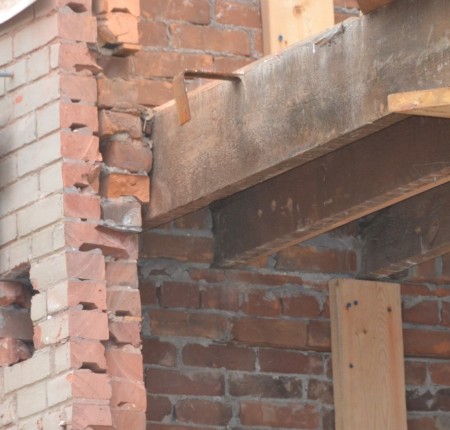
Typical wall cross section of a Toronto Double Brick house. The two wythes of brick make a structural wall and are tied with a brick across (seen above, in line with the bottom chord of the joist). Note the steel that connects the floor cavity to the front wall. Note that between the wythes there’s no drainage cavity and no room of insulation.
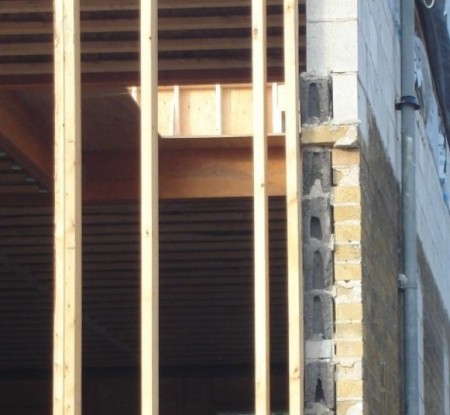
This 1940′s block (grey cinder block) and brick (yellow) shows a new full width concrete block being laid on top of the old wall for a new second story. Note that between the wythes there’s no drainage cavity and no room of insulation.
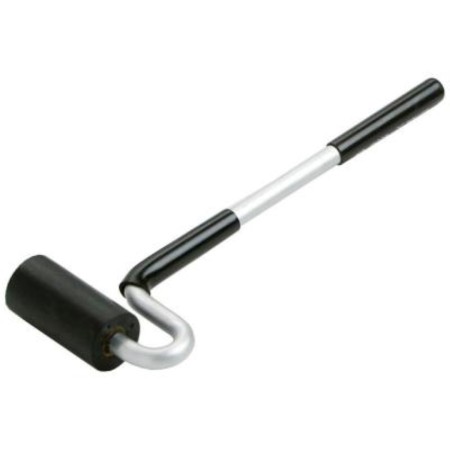
Remember, almost all tapes and peel and stick membranes REQUIRE pressure and the right conditions on the substrate. Invest in a $15 J-roller from Atlas Tools on Queen Street. A narrow, small diameter roller gets everywhere and focuses pressure where it’s needed.
Below are examples of vapour open, or breathable air barrier systems we’ve seen used that are loosely organised from good to best. Remember, air seal everything to which ever sheet good you use below; openings for windows, doors, wires, plumbing, HVAC and framing!
1- Flexible Air Barrier:
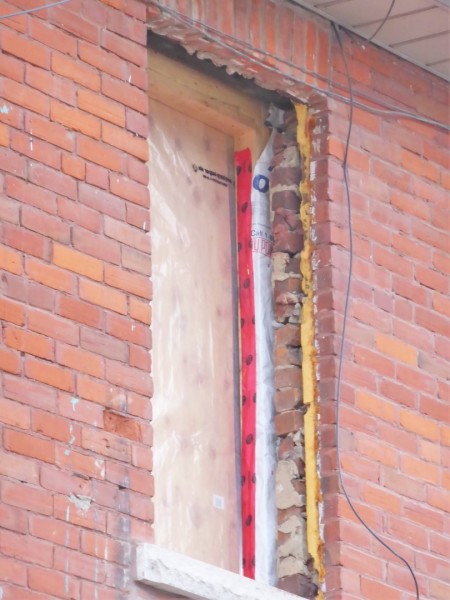
Here we can see a snap shot of Tyvek and 6mil poly; either could be the air barrier, but the Tyvek stands the best chance at being the most continuous. Which ever you chose, you’ll have to seal, lap and clamp seams to be in compliance with OBC 9.25.3.3. (2) a & b. Note the top right corner of Tyvek in the photo above needs to be stretched… With flexible air barriers, some are vapour open in one direction only (writing facing outside) and Typar can’t be taped from the backside, only on the printed side.
2 – Fully Adhered Flexible Air Barrier
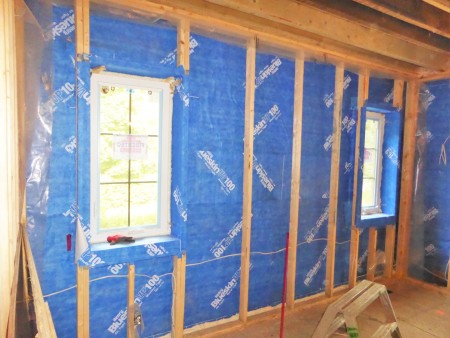
This double brick house had the interior face of brick exposed, primed and Self Adhered Membrane (SAM) installed. See below for close up. Roll this stuff to ensure it sticks well.
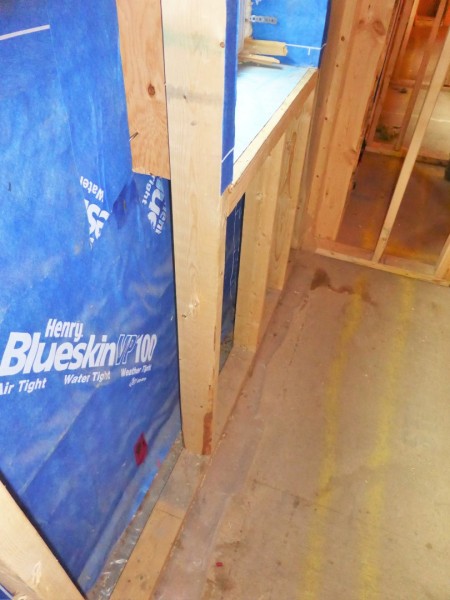
The large space behind the new stud wall was to accommodate two layers of staggered seam Roxul and a 3rd in the stud cavity. For a more robust fabric, the VP160 offers a more robust barrier.
3 – Spray Foam
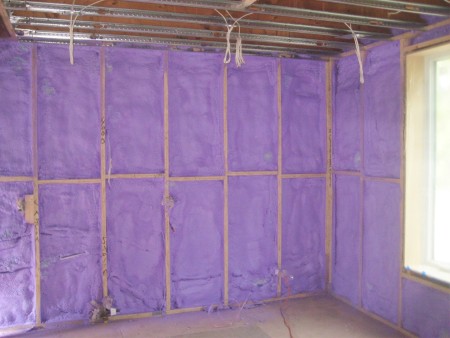
This block and brick house had 2 pound spray foam installed directly on the brick. See below for details.
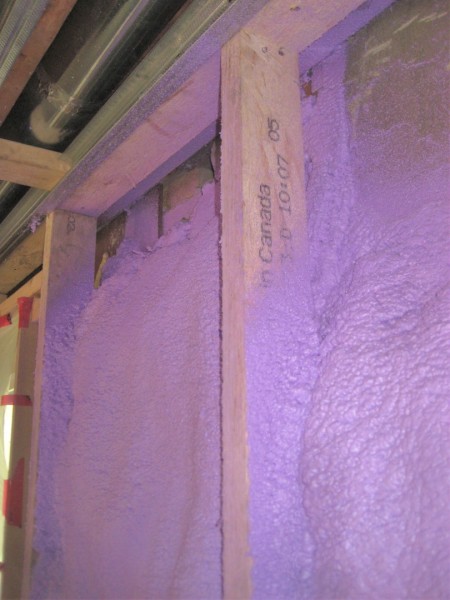
In this photo, we can see that the new wall studs were spaced far off the wall so that a monolithic layer of spray foam could be applied to the inside face of the block wall. This layer helps ensure that wood elements don’t penetrate the air barrier (foam) and cause air leakage, and the layer also reduces thermal bridging at the framing members. Air tightness test spray foam every time, we find many air leaks in foam and because the air gap between the face of the foam and the back of the drywall, the air leaks are very noticeable.
4 – Liquid Applied Air Barrier
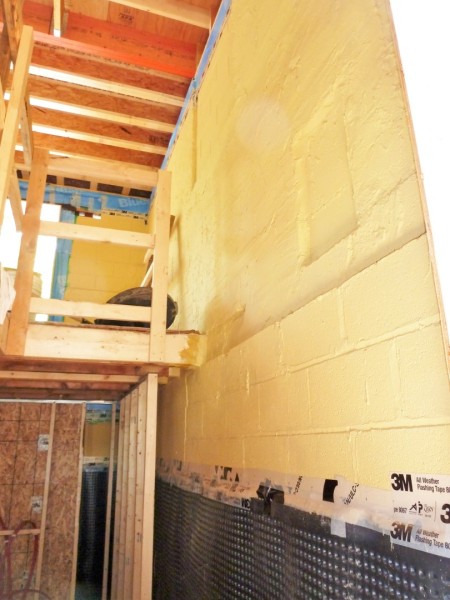
Here a 1945 block and brick house had liquid applied air barrier installed with great success as far as low air leakage rates go. Sto Gold Coat was used in this case, but Henry also make a line of breathable, liquid applied air barriers called Air Bloc. Here we see the yellow air barrier that was painted on the wall with a standard paint roller. The latex-based air barrier sticks well and is easy to apply.
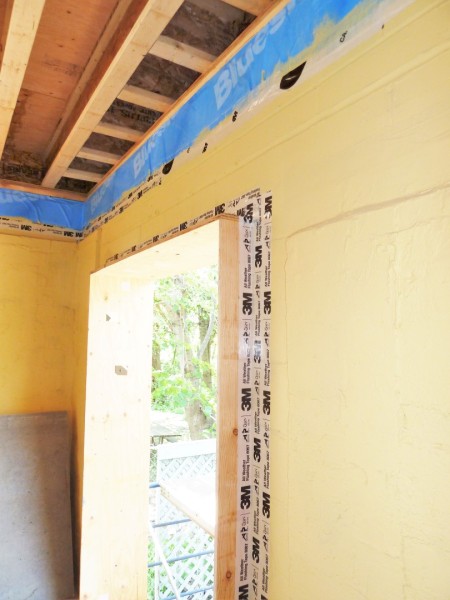
The yellow liquid air barrier is continuous and all penetrations are sealed to it like the transition to the roof cavity and the window buck. Note the 3M 8068 Flashing tape sticks incredibly well even in harsh conditions.
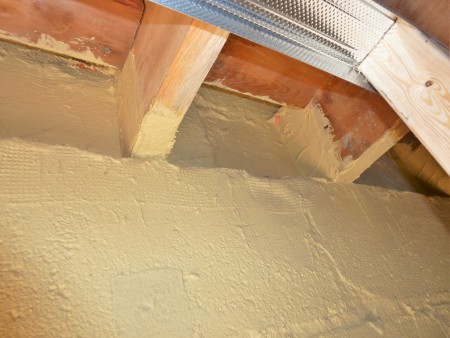
Here, where large gaps between the floor joists and masonry wall existed, a filler called Sto Gold Fill was used, followed by a fiberglass mesh called Sto Guard Mesh to give the top yellow coat some structure as the wood moves seasonally. Repairing air leaks in this membrane is exceptionally simple and tests have shown that liquid applied air barriers perform very well in solid masonry construction DER.
